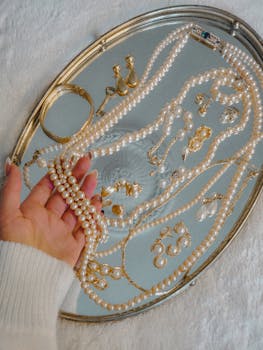
**
Silver's Silent Surge: Why This Precious Metal Is Poised for a Breakout & Outperforming Gold
For years, gold has reigned supreme as the king of precious metals, a safe haven asset sought after during times of economic uncertainty. However, a quiet revolution is brewing in the investment world, and silver is emerging as a compelling alternative, potentially even outperforming its gilded counterpart. This isn't just hype; several fundamental factors point to a significant surge in silver's value and its growing importance in a rapidly evolving global landscape. From industrial applications to its role as a hedge against inflation, let's delve into why silver is quietly becoming the real treasure.
The Industrial Demand Explosion: Fueling Silver's Rise
One of the most significant drivers of silver's potential price appreciation is its burgeoning industrial demand. Unlike gold, which is primarily viewed as a store of value, silver boasts a wide array of critical industrial applications. Its unique conductive and malleable properties make it indispensable in various sectors:
Solar Energy: The relentless push towards renewable energy sources significantly boosts silver demand. Solar panels rely heavily on silver for their efficiency, and as the world transitions away from fossil fuels, the demand for silver in this sector is set to skyrocket. This makes silver investment a play on the green energy revolution.
Electronics: From smartphones to computers, and even electric vehicles, silver is a crucial component in numerous electronic devices. The ongoing technological advancements and the increasing penetration of technology globally fuel consistent demand for this precious metal. This aspect contributes significantly to silver price prediction models.
Medical Applications: Silver's antibacterial properties make it a key ingredient in various medical applications, including wound dressings and medical instruments. The growing healthcare sector further underscores the importance of silver in modern medicine. This expands the opportunities for silver ETF investments.
Automotive Industry: The rise of electric vehicles (EVs) is creating a new wave of demand for silver. EVs require significantly more silver than traditional combustion engine vehicles, owing to their reliance on electric motors and batteries. Therefore, silver futures trading is becoming increasingly important for investors.
Silver as an Inflation Hedge: A Safe Haven in Uncertain Times
While gold has long been considered a hedge against inflation, silver is increasingly recognized for its similar capabilities. As inflation erodes the purchasing power of fiat currencies, investors often seek refuge in tangible assets like precious metals. Silver's relatively lower price compared to gold makes it a more accessible option for a broader range of investors seeking inflation protection.
The current global economic climate, characterized by fluctuating interest rates and geopolitical uncertainties, further reinforces the importance of diversifying investments into precious metals. This makes silver mining stocks an attractive option for some investors. Many analysts believe that silver's price will continue to rise as inflation persists.
The Supply-Demand Imbalance: Driving Price Appreciation
Another factor contributing to silver's rising value is the growing disparity between its supply and demand. While mine production of silver has remained relatively stable, the industrial demand, as discussed above, is surging. This imbalance creates a situation where supply cannot keep pace with demand, leading to potential price escalation. This makes understanding silver market trends crucial for investors.
Silver vs. Gold: A Tale of Two Metals
While both gold and silver are precious metals, their characteristics and market dynamics differ significantly. Gold’s primary appeal lies in its status as a safe haven asset and a store of value, whereas silver possesses a dual nature – combining its store of value aspect with substantial industrial applications. This makes silver a more versatile investment compared to gold. The increasing silver vs gold ratio is a key indicator for many investors.
Investing in Silver: Strategies and Considerations
Investing in silver offers several avenues, each carrying its own set of risks and rewards:
Physical Silver: Purchasing physical silver bars or coins is a popular choice for those seeking tangible ownership. However, it requires secure storage.
Silver ETFs: Exchange-Traded Funds (ETFs) tracking silver prices offer a convenient and diversified way to invest in the metal.
Silver Mining Stocks: Investing in companies engaged in silver mining offers leveraged exposure to silver prices. However, it carries higher risk.
Silver Futures Contracts: These contracts allow investors to speculate on future silver prices, offering both high potential returns and high risk.
Conclusion: The Silver Lining in Uncertain Times
Silver's rising prominence is not merely a fleeting trend; it's a reflection of fundamental shifts in the global economy and technological landscape. The surging industrial demand, combined with its potential as an inflation hedge and the widening supply-demand gap, positions silver as a compelling asset class for investors seeking diversification and growth. While no investment is without risk, the evidence suggests that silver deserves a serious place in any well-diversified portfolio. Understanding silver charts, silver price history, and related market dynamics is key to making informed investment decisions. The "silent surge" may be over soon, as silver's potential is becoming increasingly undeniable.




















